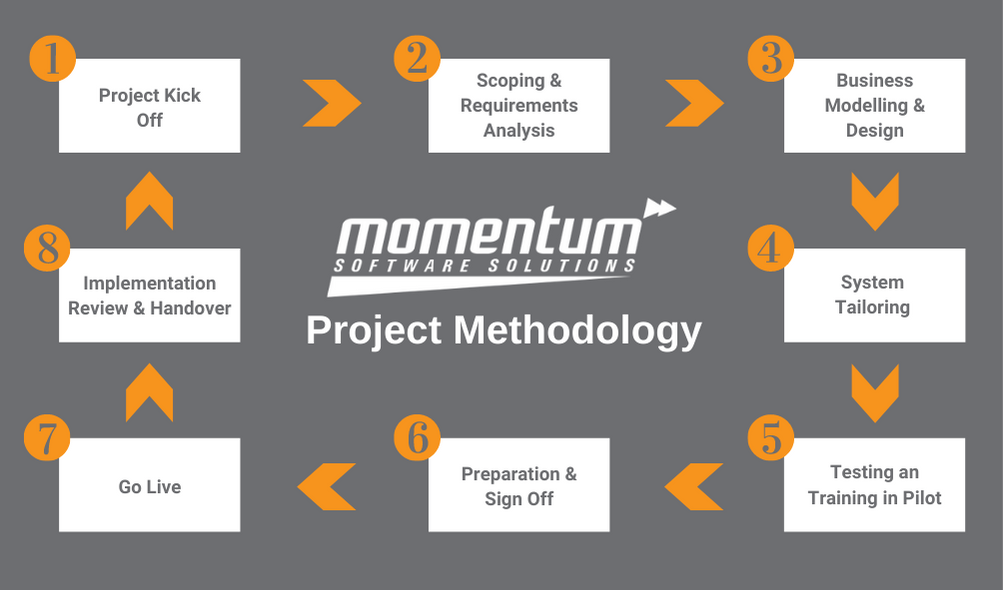Implementing a sophisticated ERP solution is not something to be taken lightly. There are many steps involved and it’s essential that each one is done right. Sometimes, change management can be a bit challenging and knowing what to expect up front can help with the resistance to change. Below are the basic steps of an ERP implementation.
STEP ONE – PROJECT KICK-OFF
Your project will be assigned with a project manager and a lead consultant who will manage the implementation from end to end. You will receive some documents outlining your responsibilities. For example:
Your Responsibilities
- Appoint an internal Project Manager and Super User.
- Commit resources (people)
- Preparedness to modify or adapt some business processes.
- ‘Change Management’ including informing staff of upcoming changes, training, timing and dealing with any resistance to change.
- Provide consultant with clear requirements in respect of business forms i.e. invoices etc. and reports
- Provide a list of users and their required access
- Commitment to training
- Documentation of business processes
- Pilot testing
STEP TWO: SCOPING AND REQUIREMENTS ANALYSIS
This includes:
- Assessing server and workstation compatibility
- Configuration surveys
- Project plan confirmation – critical success factors defined
- Process workflows – business process reviews and configuration review
STEP THREE: BUSINESS MODELING & DESIGN
- Installation of software and connections (for on-premise solutions)
- Migration of data including customer, vendor and item master files
- Configure prototype and test system ready for super-user training
- Procedure development and documentation.
STEP FOUR: SYSTEM TAILORING
- Forms and reports customisation
- Custom applications if applicable
- Refine the prototype
STEP FIVE: PILOT
- Training of super-users – this step is critical
- Testing scripts for pilot testings
- Super-users conduct pilot testing
- Address and resolve any discrepancies from pilot testing
STEP SIX: PREPARATION
- Super-user training and testing sign off (system and environment fit for purpose)
- End-user training
- Cut over plan – agreed and go-live readiness meeting
- Live system – master data setup and ready for opening balances
STEP SEVEN: GO-LIVE
- Opening balances signed off prior to live transactions being processed
- Live system processing – go live
- Go-live handholding
STEP EIGHT: POST IMPLEMENTATION REVIEW
- First-month end support
- Implementation review
- Support handover – implementation signed off and site handover to support.
Depending on the complexity of your business an ERP implementation can take up to 3 months or more to complete. Momentum have many years’ experience in implementing ERP software and can help you take your business to the next level. If you would like a free business review or a demonstration of our ERP solution, call us on 07 5479 1877 or get in touch here.
